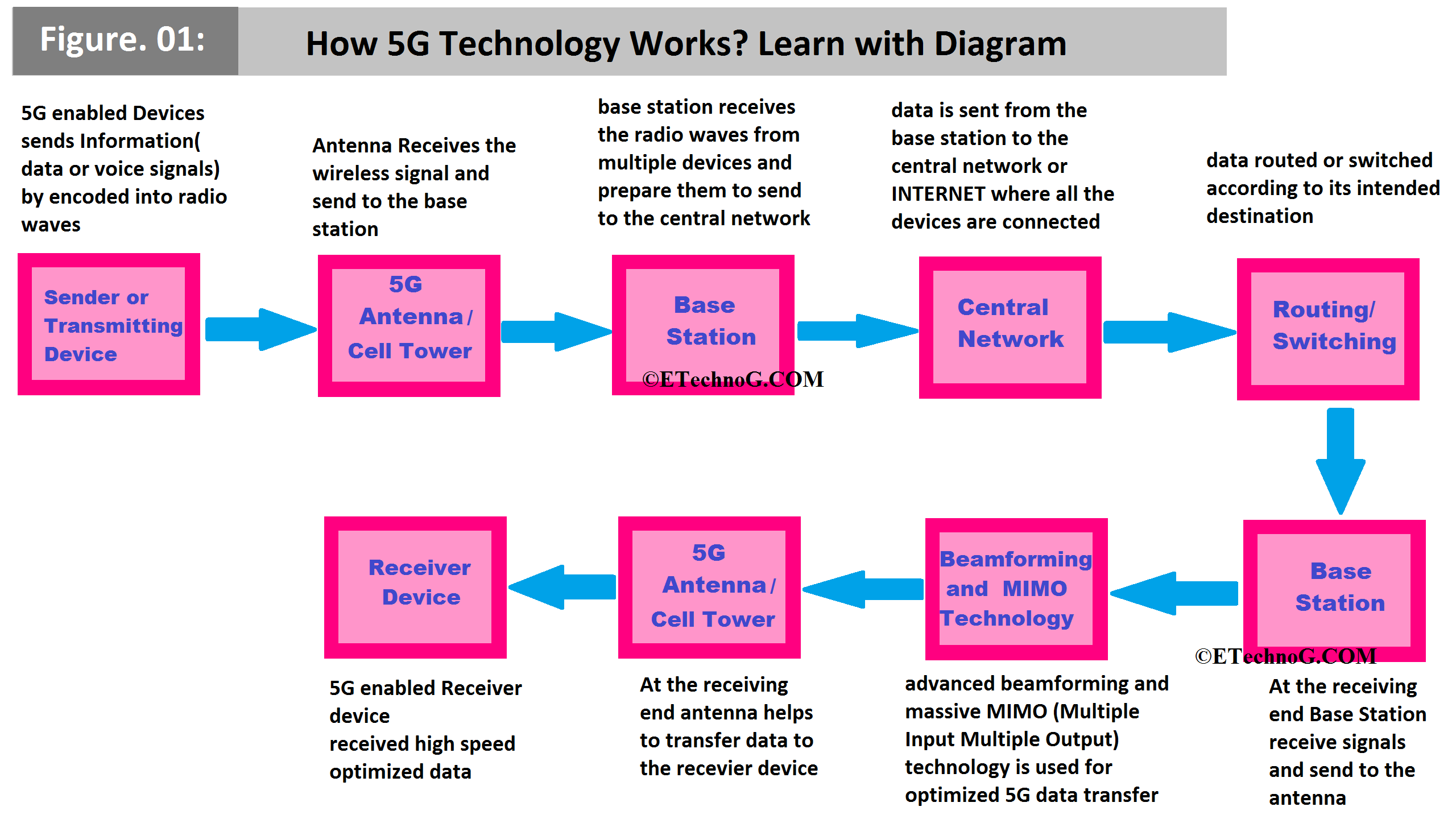How 5G Technology Works? Learn with Block Diagram
5G technology is the 5th generation of wireless communication and operates through a complex network infrastructure. So in this article, we will understand its working concept with a block diagram that will help to break down the concept in a very simple way.
At its core, 5G relies on small cell base stations deployed across a coverage area. These base stations communicate with user devices, such as smartphones or Internet of Things (IoT) devices. The data flows through a series of network components, including access and core networks. These networks enable high-speed data transmission, low latency, and massive device connectivity.
Key technologies like Massive MIMO (Multiple Input Multiple Output), beamforming, and millimeter-wave frequencies enhance the efficiency and capacity of 5G networks. The combination of these elements facilitates the delivery of ultra-fast data speeds, and seamless connectivity, and supports innovative applications like autonomous vehicles, remote surgery, and immersive virtual reality experiences.
Click on the image to Enlarge
As you see in the above block diagram, the 5G technology has the following important parts or components,
The sender or Transmitting Device:
5G-enabled devices send information (data or voice signals) encoded into radio waves.
5G Antenna/ Cell Tower:
The antenna receives the wireless signal and sends it to the base station.
Base Station:
- At the sending end, the base station receives the radio waves from multiple devices and prepares them to send to the central network.
- At the receiving end, the base station receives signals and sends them to the antenna.
Central Network:
Data is sent from the base station to the central network or INTERNET, where all the devices are connected.
Routing/Switching:
- Data is routed or switched according to its intended destination.
- Routing algorithms are utilized to make intelligent decisions based on factors such as network congestion, latency, and available bandwidth.
- Switches facilitate the connection between different network segments, ensuring seamless data flow.
Beamforming and MIMO Technology:
- Advanced beamforming and massive MIMO (Multiple Input Multiple Output) technology is used for optimized 5G data transfer.
- Beamforming is a technique used in 5G to focus the transmission and reception of wireless signals in specific directions.
- By dynamically adjusting the phase and amplitude of signals, beamforming improves signal strength, reduces interference, and extends coverage.
- MIMO technology involves the use of multiple antennas for both transmitting and receiving wireless signals.
- Multiple antennas enable simultaneous transmission and reception of multiple data streams, increasing throughput and spectral efficiency.
Receiver Device:
5G enabled receiver devices receive high-speed optimized data.
How 5G Technology Works? Learn with Block Diagram
 Reviewed by Author
on
April 11, 2024
Rating:
Reviewed by Author
on
April 11, 2024
Rating:
 Reviewed by Author
on
April 11, 2024
Rating:
Reviewed by Author
on
April 11, 2024
Rating:

